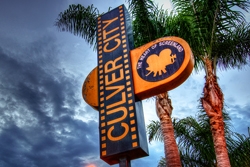
Over the coming months, residents are going to hear a lot from the Cultural Affairs Commission about something called the “creative economy.” It’s an exciting, deeply beneficial part of our Culver City community, and it’s about far more than public arts and cultural activities.
In fact, a sizable part of our local economy is generated by companies, organizations and professionals who work in creative fields: design, marketing, film, architecture, fashion and digital media to name just a few. It also includes venues that provide a space for artists to share their work, including museums and theaters, and education providers such as Culver City High School’s AVPA program.
To offer a benchmark for comparison, creative industries are the primary driver of economic growth in the Los Angeles region. According to Otis College of Art and Design, not only does L.A.’s creative economy employ nearly 750,000 people throughout the county (1 in 6 jobs available), but it provides $177 billion in total economic output, equal to 13% of regional GDP. In addition, creative industries generate $7.7 billion in tax revenue, and total labor income of $53.4 billion.
These figures make L.A. the largest creative economy in the nation. Given that Culver City is within that footprint, and has expanded in part due to a steady influx of creative firms and artists, it is essential that we not only identify our share, but understand how much of our economic and civic health is connected to it.
Last year, City Council asked the Cultural Affairs Commission and staff to find answers. To meet this challenge, we reached out to Otis and the Los Angeles County Economic Development Corporation (LAEDC) to learn more about their acclaimed Report on the Creative Economy for both Los Angeles and the State of California. The result was a decision to partner with the LAEDC to produce our own Creative Economy report, and make Culver City the first small city in California to follow the Otis/LAEDC model.
Set for release this summer, our report will examine a decade of statistical data about Culver City’s creative industries and their economic impact. Conducted by the economists of the LAEDC, it is an objective analysis crucial to helping the city make smarter decisions on multiple levels: from attracting investment and tourism to development, taxation and growth planning.
I invite you to join the Cultural Affairs Commission when we present this landmark report to City Council, and hope you will read the full report when it becomes available. You can also find the latest cultural events happening throughout our city by visiting the Arts & Culture calendar at culvercity.org.
Len Dickter is the Culver City Cultural Affairs Commissioner
